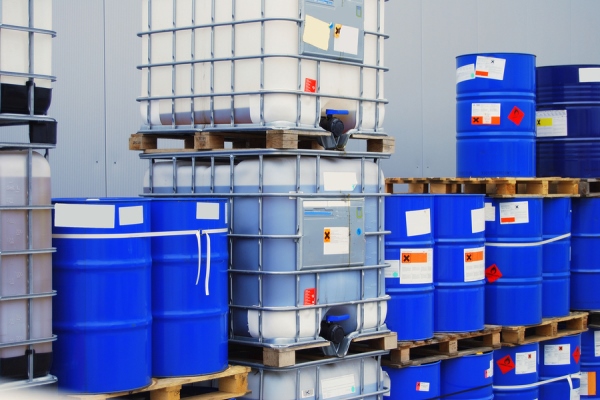Chemical Safety Tips

Chemicals are a major part of our everyday life at home, work and play. Examples include toxics, corrosives, solvents and numerous other substances. As long as we take proper precautions, these substances can be handled safely.
Chemicals that you use at home include gasoline, paints, fertilizers, lawn chemicals, bug spray, paint strippers, kerosene, bleach and other household cleaners.
However, chemicals you may use at work are facility-specific solvents, laboratory chemicals, fuels, paint, office copier chemicals, correction fluid, lubricants and corrosives.
We are exposed to chemicals by these ways.
- Inhalation Breathing in dusts, mists and vapors - Example: Working with bags of concrete at home without a respirator
- Ingestion Eating contaminated food - Example: Having lunch in the work area where there are airborne contaminants
- Absorption Skin contact with a chemical - Example: Contact dermatitis or an eye irritation
- Injection Forcing an agent into the body through a needle or a high-pressure device - Example: Needle stick or misuse of a high-pressure washer
You can protect yourself against chemical hazards by:
- Reading container labels, material safety data sheets (MSDSs) and safe-work instructions before you handle a chemical;
- Using specified personal protective equipment (PPE) that may include chemical-splash goggles, a respirator, safety gloves, apron, steel-toed shoes, safety glasses with side shields, etc. Ensure the PPE fits properly and you are trained in its use;
- Inspecting all PPE before you use them. Look for defects in the equipment such as cracks, missing parts, rips, etc. Ensure your respirator has the proper chemical cartridge for the particular chemical hazard. Change cartridges when it is necessary;
- Knowing the location of safety showers and eyewash stations and how to use them;
- Washing your hands before eating, especially after handling chemicals;
- Leaving your contaminated clothing at work. If you wear the clothes home, you can expose your family to the hazards.
